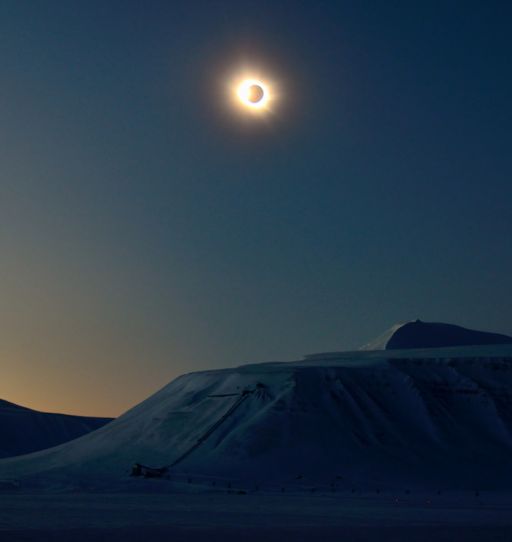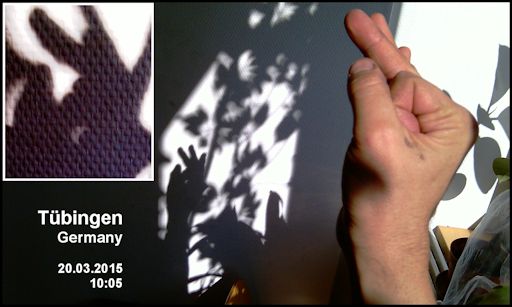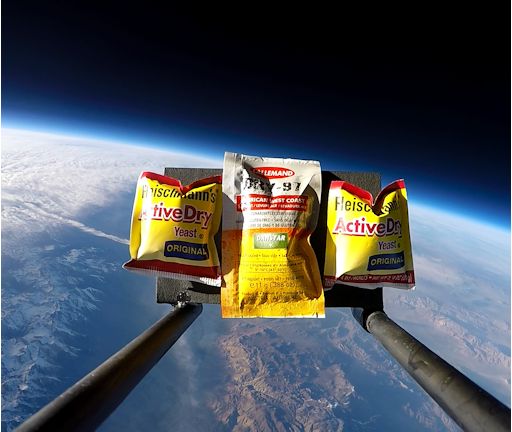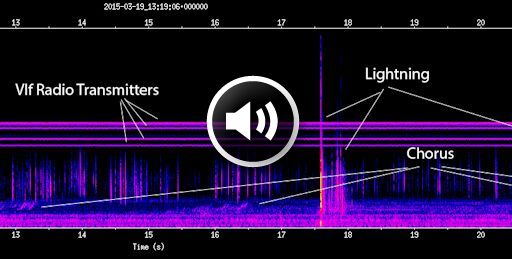Learn to photograph Northern Lights like a pro. Sign up for Peter Rosen's Aurora Photo Courses in Abisko National Park. | | |
GEOMAGNETIC ACTIVITY: Minor (G1-class) geomagnetic storms are underway around the Arctic Circle. These are, essentially, reverberations from the March 17th CME strike amplified to storm-strength by a newly-arriving solar wind stream. High-latitude sky watchers should remain alert for auroras on March 20th. Aurora alerts: text, voice
TOTAL ECLIPSE OF THE SUN: This morning, the sun came up over the Arctic Circle--and it promptly went out again. The first day of northern Spring coincided with a total solar eclipse. The path of totality curved through the Arctic Ocean, making landfall in only two places: Svalbard and the Faroe Islands. Ivar Marthinusen sends this picture from Adventdalen, near the capital of Svalbard:

"Fantastic eclipse, and totally clear skies," says Marthinusen. "It was really hard to take pictures in -18 degrees Celsius though.".
While the total eclipse unfolded over the Arctic Ocean, sky watchers across Europe, Iceland, Greenland and Asia witnessed a partial eclipse: animated eclipse map. In those places, the Moon passed in front of the sun off-center, producing crescent-shaped sunbeams and shadows. Fero Digel of Tübingen, Germany, turned his own hand into a projector to form an impromptu image of the crescent sun:

"I forgot my telescope at home when I went to work today, so I used my hand as a pinhole camera - and was quite surprised of what I could see!" says Digel.
Partial eclipses do not darken the landscape like a total eclipse. Nevertheless, there is a change in ambient lighting. In Deventer, the Netherlands, Peter Paul Hattinga Verschure measured a definite dimming as the edge of the Moon's shadow swept past his home town..
For more pictures of the eclipse, monitor Spaceweather.com's realtime photo gallery:
Realtime Space Weather Photo Gallery
SPACE YEAST: On March 17th, during the strongest geomagnetic storm of the current solar cycle, Spaceweather.com and the students of Earth to Sky Calculus launched a Space Weather Buoy to measure the effect of the CME's impact on cosmic rays in the stratosphere. Along with radiation detectors and other sensors, the payload carried some hitchhikers--brewer's and baker's yeast:

During their ascent to the stratosphere, the yeast experienced temperatures as low as -60 C, air pressures only 1% of sea level, and cosmic ray dose rates 40 times Earth-normal.
What can you do with Space Yeast? Bake space bread, brew space beer, or whip up any recipe that calls for yeast. Also, teachers and homeschoolers can conduct some cool classroom experiments.
If you would like a packet of space yeast, you can have one by making a donation of $49.95 to Earth to Sky Calculus. Every flown packet of baker's yeast comes with a control packet that remained behind on Earth during the flight, so you can conduct a properly-controlled scientific experiment. All proceeds support student space weather research. Contact Dr. Tony Phillips to place your order.
AURORAL CHORUS: Earth is a natural radio. Plasma waves coursing through the magnetosphere produce a symphony of "tweeks," "whistlers" and "sferics." Radio receivers operating at very low frequencies (0.1 to 10 kHz) pick up these otherworldy sounds on a daily basis. On March 17th, the symphony reached fever pitch. Radio observer Kevin Palivec reports from Hawley, Texas: "During this week's powerful geomagnetic storm, I picked up a very low frequency (VLF) radio phenomena called 'auroral chorus' for the first time." Click to listen to a sample recording:

"It sounds like birds chirping with the bacon frying in the background," he describes. "I never thought I would detect these signals as far south as Texas. This was one strong magnetic storm."
Readers who wish to monitor Earth's natural radio emisions for themselves can buy a NASA VLF radio receiver kit from the INSPIRE project. It's a fun project for scientists of all ages.
Realtime Aurora Photo Gallery
Realtime Comet Photo Gallery
Every night, a network of NASA all-sky cameras scans the skies above the United States for meteoritic fireballs. Automated software maintained by NASA's Meteoroid Environment Office calculates their orbits, velocity, penetration depth in Earth's atmosphere and many other characteristics. Daily results are presented here on Spaceweather.com.
On Mar. 20, 2015, the network reported 4 fireballs.
(4 sporadics)

In this diagram of the inner solar system, all of the fireball orbits intersect at a single point--Earth. The orbits are color-coded by velocity, from slow (red) to fast (blue). [Larger image] [movies]
Potentially Hazardous Asteroids (
PHAs) are space rocks larger than approximately 100m that can come closer to Earth than 0.05 AU. None of the known PHAs is on a collision course with our planet, although astronomers are finding
new ones all the time.
On March 20, 2015 there were potentially hazardous asteroids.
Notes: LD means "Lunar Distance." 1 LD = 384,401 km, the distance between Earth and the Moon. 1 LD also equals 0.00256 AU. MAG is the visual magnitude of the asteroid on the date of closest approach. | | The official U.S. government space weather bureau |
| | The first place to look for information about sundogs, pillars, rainbows and related phenomena. |
| | Researchers call it a "Hubble for the sun." SDO is the most advanced solar observatory ever. |
| | 3D views of the sun from NASA's Solar and Terrestrial Relations Observatory |
| | Realtime and archival images of the Sun from SOHO. |
| | from the NOAA Space Environment Center |
| | the underlying science of space weather |

